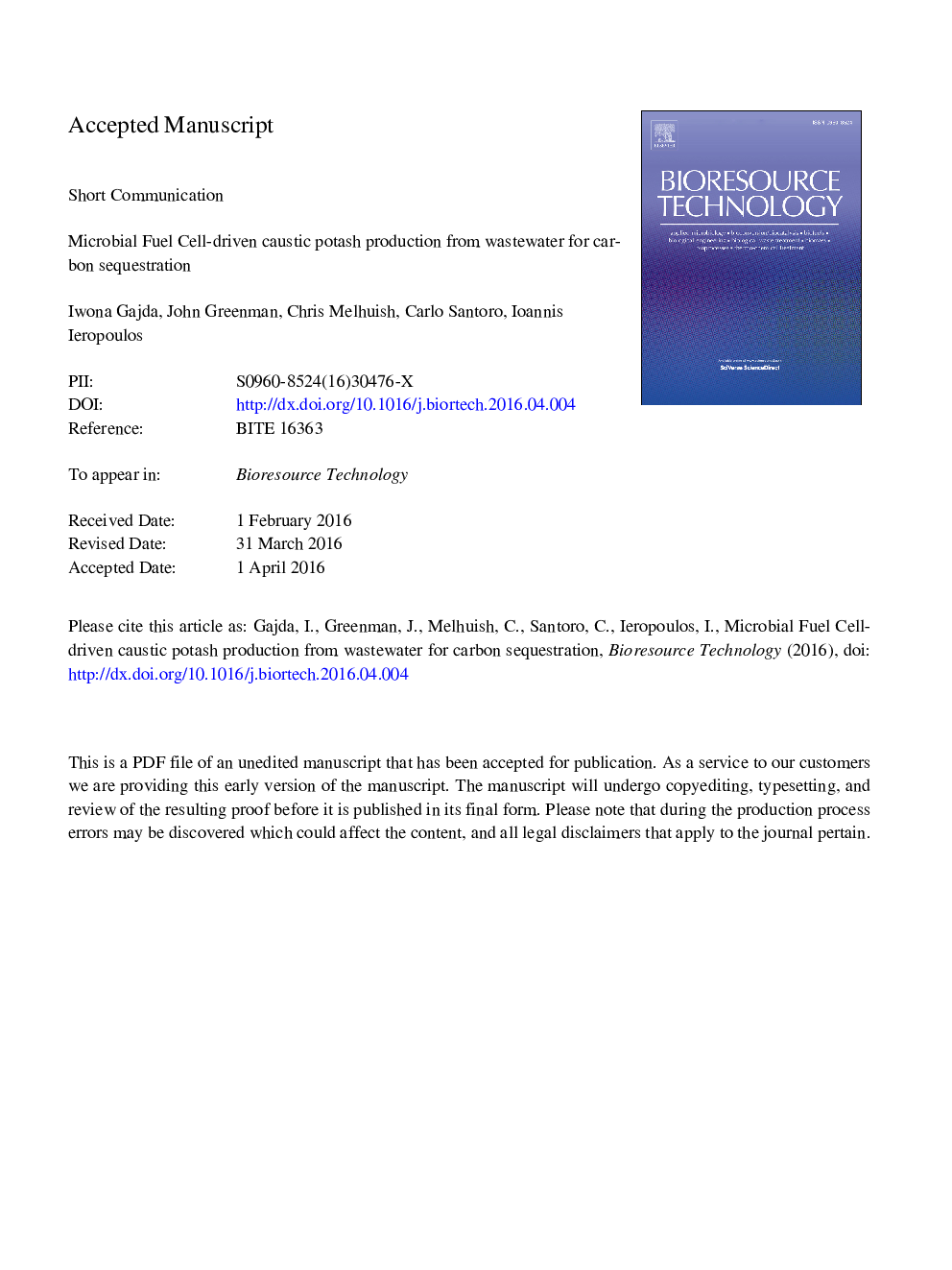| Article ID | Journal | Published Year | Pages | File Type |
|---|---|---|---|---|
| 7070924 | Bioresource Technology | 2016 | 20 Pages |
Abstract
This work reports on the novel formation of caustic potash (KOH) directly on the MFC cathode locking carbon dioxide into potassium bicarbonate salt (kalicinite) while producing, instead of consuming electrical power. Using potassium-rich wastewater as a fuel for microorganisms to generate electricity in the anode chamber, has resulted in the formation of caustic catholyte directly on the surface of the cathode electrode. Analysis of this liquid has shown to be highly alkaline (pHÂ >Â 13) and act as a CO2 sorbent. It has been later mineralised to kalicinite thus locking carbon dioxide into potassium bicarbonate salt. This work demonstrates an electricity generation method as a simple, cost-effective and environmentally friendly route towards CO2 sequestration that perhaps leads to a carbon negative economy. Moreover, it shows a potential application for both electricity production and nutrient recovery in the form of minerals from nutrient-rich wastewater streams such as urine for use as fertiliser in the future.
Related Topics
Physical Sciences and Engineering
Chemical Engineering
Process Chemistry and Technology
Authors
Iwona Gajda, John Greenman, Chris Melhuish, Carlo Santoro, Ioannis Ieropoulos,
